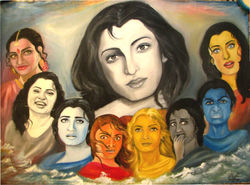top of page

 |
|---|
page end
 |
|---|
natyashastra
The Natyashastra is a treatise on dance and drama attributed to the sage Bharata Muni. It is believed to have been composed in In the Fifth Century ( check ) AD Bharata established artistic principles and a system of training. These rigid rules of the language of gesture were laid out in his treatise the Natya Shastra. Sanskrit has a single word for dance and drama, the two being considered inseparable: Natya.
Bharata speaks of Nritya the expressive dance that tells a story through pantomime; and Nritta, the pure dance performed for its own sake, in which the dancer surrenders to intoxicating rhythm.
The Natyashastra is important as it is a treatise on the various human emotions and longings that exist in us and how they can be awakened, brought out and expressed. According to the Natyashastra creating plays and paintings, writing poetry, making sculptures, chanting, meditating, even religious discourse and listening to myths and legends and communal singing, are some of the acts and behaviors, that can help to beckon, engage and awaken the Ras.
Dance, of course, is the greatest of the devices for the Ras to be awakened and Garba and Raas are the greatest of dances.
The Nine Rasas
The Amorous
The Pathetic
The Valorous
The Furious
The Repellant
The Jovial
The Terrible
The Wonderful
The Pacific
this Rasa
 |
|---|
bottom of page